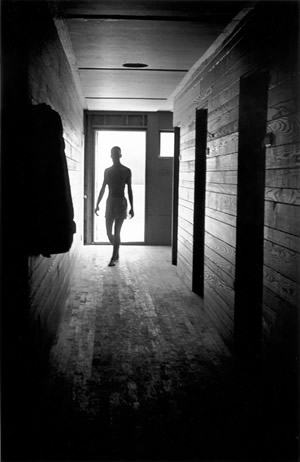 | asheville business & community directory |
|
This is an archived page that may contain outdated or incorrect information. Please visit www.Asheville.com for the latest news, events, and more.
 Hazel Larsen Archer has been called the archetypal Black Mountain College photographer. More than any other single photographer associated with the college, Archer created a strikingly beautiful and historically important collection of images based on the place itself and the people who lived in the BMC community during the late 1940s and early 1950s. This long overdue exhibition will give an in-depth look at Archer�s photographs from her nine years at the college both as a student and a teacher. BMCM+AC will publish a 92 page, fully illustrated book to accompany the exhibition.
Hazel Larsen Archer has been called the archetypal Black Mountain College photographer. More than any other single photographer associated with the college, Archer created a strikingly beautiful and historically important collection of images based on the place itself and the people who lived in the BMC community during the late 1940s and early 1950s. This long overdue exhibition will give an in-depth look at Archer�s photographs from her nine years at the college both as a student and a teacher. BMCM+AC will publish a 92 page, fully illustrated book to accompany the exhibition.
Hazel Larsen Archer died in 2001 after a productive life spent primarily as a photographer and teacher in North Carolina and then Arizona. She first attended Black Mountain College in 1944 after hearing an enthusiastic report from another student at Milwaukee State Teachers� College. She stayed at BMC for nine years, first as a student, then as a teacher of photography. Later describing her acceptance to the college, she said, �Unbeknownst to me, a blessed star fell on my head.� Though certainly less known than other photographers who spent time at Black Mountain College (notably Harry Callahan and Aaron Siskind) Hazel Larsen Archer did something that they were unable to do simply because their time at BMC was limited. She photographed the life of the community, its people, and significant places. She photographed Merce Cunningham dancing...in a sequential format to communicate movement through space and time. She photographed the doors of the Quiet House (a small meditation structure built in memory of a deceased faculty child) over and over, watching the changing patterns of light and shadow. She was particularly interested in photographic portraiture, close-up studies of people in the college community. Thus we have fine early portraits of John Cage, Merce Cunningham, Willem de Kooning, Ruth Asawa, Josef and Anni Albers, Buckminster Fuller surrounded by his amazing array of geometric models, and others. She was immersed in the life of the community and saw that her role included documenting the gifted individuals and their activities as life unfolded at BMC. It is interesting to note that Hazel Larsen Archer was a polio survivor, having contracted the disease at the age of ten, and was therefore limited to a wheelchair. This is certainly not apparent from the photos, however, and only comes to our attention through anecdotes told by her subjects. Due to a fire in the science building which housed the college�s darkroom, most of the photographer�s early negatives were destroyed. Many of the remarkable images in this exhibition and book were made in the summer of 1948 during the Summer Institute arranged by Josef Albers. It was an extraordinary summer by any measure. Buckminster Fuller and his students attempted to build the first large-scale geodesic dome (it failed to rise and was thus named the Supine Dome); Arthur Penn co-directed (with Helen Livingston) a play by Erik Satie, The Ruse of Medusa, with cast members Buckminster Fuller, Merce Cunningham and Elaine de Kooning, piano accompaniment by John Cage and set design by Willem and Elaine de Kooning. Among the outstanding students enrolled that summer were artists Kenneth Noland, Ray Johnson, Pat Passlof, Kenneth Snelson, Joe Fiore, director Arthur Penn, and of course, photographer Hazel Larsen Archer. Also that summer, Cunningham and Cage were developing their collaborative projects as well as teaching dance and music composition; there were frequent concerts, lectures and performances all contributing to the fertile climate of creative challenge in the air. The era during which Hazel Larsen Archer was at Black Mountain College is acknowledged by many as one of the college's peaks in terms of intellectual and artistic activity and synergistic, cross disciplinary innovation. The college was transitioning from a predominantly European sensibility to one that was distinctly American. These years at BMC were the genesis for much of American culture in the second half of the twentieth century. We at BMCM+AC feel fortunate that such a gifted photographer was present at Black Mountain College during this fertile time and that her images are now available to be seen and appreciated. This exhibition and book have been made possible through the generous support of the following: Asheville Savings Bank, John Cram, Joe and Cynthia Kimmel, Joscelyn W. Hill, North Carolina Arts Council, Western Carolina University Fine Art Museum, Rob Pulleyn, Mary Holden Thompson, F/32 Photo Group, and Jack and Helga Beam. (Image provided by Black Mountain College.)
|
